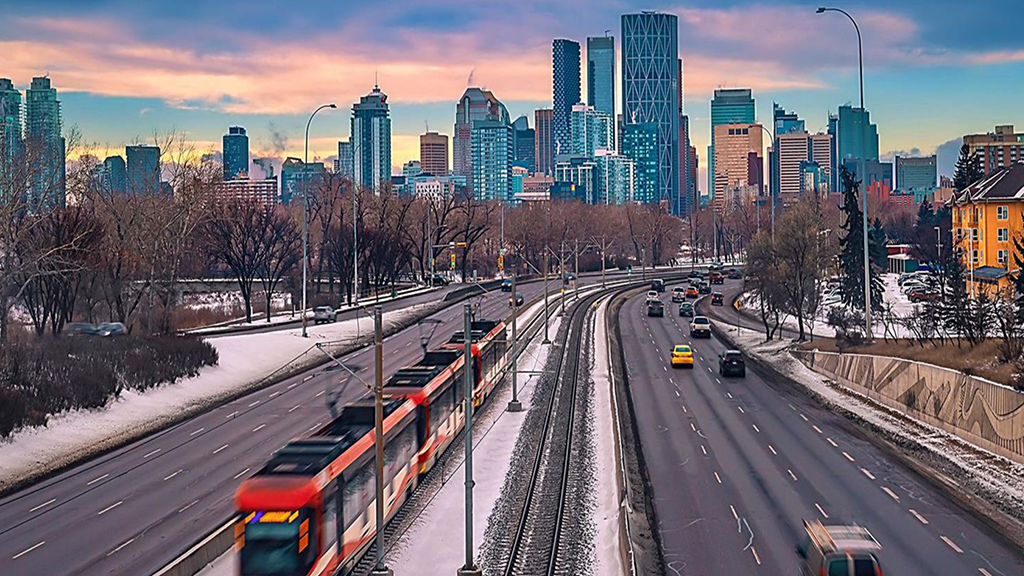Administrative staff at the City of Calgary have been directed to come up with a strategy to bring the pavement quality of the city’s network of arterial, collector and local roads up to snuff within a decade.
The infrastructure and planning committee received a report recently that warned much of Calgary’s 17,000 kilometres of roads are in need of major repairs and a massive boost in funding for maintenance.
Chris Yang, leader, pavement asset management for the city, indicated in the report that the road network, valued at $15 billion, is under increasing pressure from rising traffic volumes and decreasing pavement quality.
The city’s budget for 2024 was $47.8 million annually, significantly lower than other cities, including Edmonton, which has an inventory of approximately 13,000 kilometres and a $158.8-million annual budget.
Earlier, city council had allotted another $30 million between 2024 and 2026, and $8.9 million in 2025 and 2026 and, recently, decided to add another $20 million to the 2025 budget to enhance the road network. However, the report warns significant increases will still be needed in the coming years.
“Financial support has not kept pace with the demands of our expanding infrastructure,” Yang noted. “As pavement quality deteriorates, failure to achieve an acceptable level of service will lead to future repairs requiring more reconstruction as opposed to repaving, which will result in reconstruction costs five to seven times more than traditional paving and repair programs.”
The report was prepared in response to an earlier directive by council. Councillors had asked staff to look at an appropriate funding increase for the surface overlay program to help reduce seasonal street repairs and improve mobility for all modes of transit, including vehicles, bicycles and city transit buses.
The report concluded intervention is necessary to prevent costly future reconstruction. It suggests the city first address the backlog of deferred reconstruction and major repaving work then take steps to improve the thoroughfares.
Staff proposed and the committee recommended a pavement quality target be set so that arterial, collector and local roads are in good condition at 60 per cent, 54 per cent and 42 per cent respectively in 10 years.
The current assessed condition of Calgary’s road network is 38 per cent good, 36 per cent fair, and 26 per cent poor. The condition or the road network has been steadily deteriorating since 2014.
The Canadian municipal average of roads in good condition is 60 per cent, which also aligns with Calgarian’s expectations in a recent pavement quality survey.
In spring 2024, a survey indicated infrastructure, traffic and roads were key issues of Calgarians. In an August survey, 88 per cent indicated council should prioritize roads when making budget decisions, 93 per cent said to prioritize arterial roads and 88 per cent felt it was important to prioritize collector roads.
Presently, roads in Calgary consist of 5,375 kilometres of arterial roadway, 3,382 kilometres of collector, and 8,326 kilometres of local roads.
The report noted that, at current funding levels, the existing road network will deteriorate by 3.2 per cent annually, or by 26 per cent by 2034, due to wear and tear from increased traffic and heavier vehicles and weakening of the road base from water leaks and excavation of roads to permit utility repairs and new construction.
Calgary is particularly susceptible to freeze-thaw cycles which impact the service life of roads and contribute to the formation of potholes and pavement cracks. There was a 52-per-cent increase in the number of reported potholes between January through September 2023, compared to the same period in 2024.
As of early October, crews had filled approximately 25 per cent more potholes in 2024 than they did over the same period in 2023, highlighting how quickly the roads are deteriorating.
The report notes establishing a pavement quality level of service for Calgary’s road network will help improve the user and passenger experience, enhance safety, minimize future costs and establish clear parameters for roadway repairs.
To gauge the cost, staff had Toronto Metropolitan University analyze the city’s road data condition and deterioration rates and provide recommendations for an acceptable pavement quality level of service.
To increase all roads to 60 per cent good condition, which aligns with the sentiment of Calgarians, the analysis concluded a $132-million annual investment through 2034 would be required, which would mean a hike of roughly $80 million annually.





Recent Comments